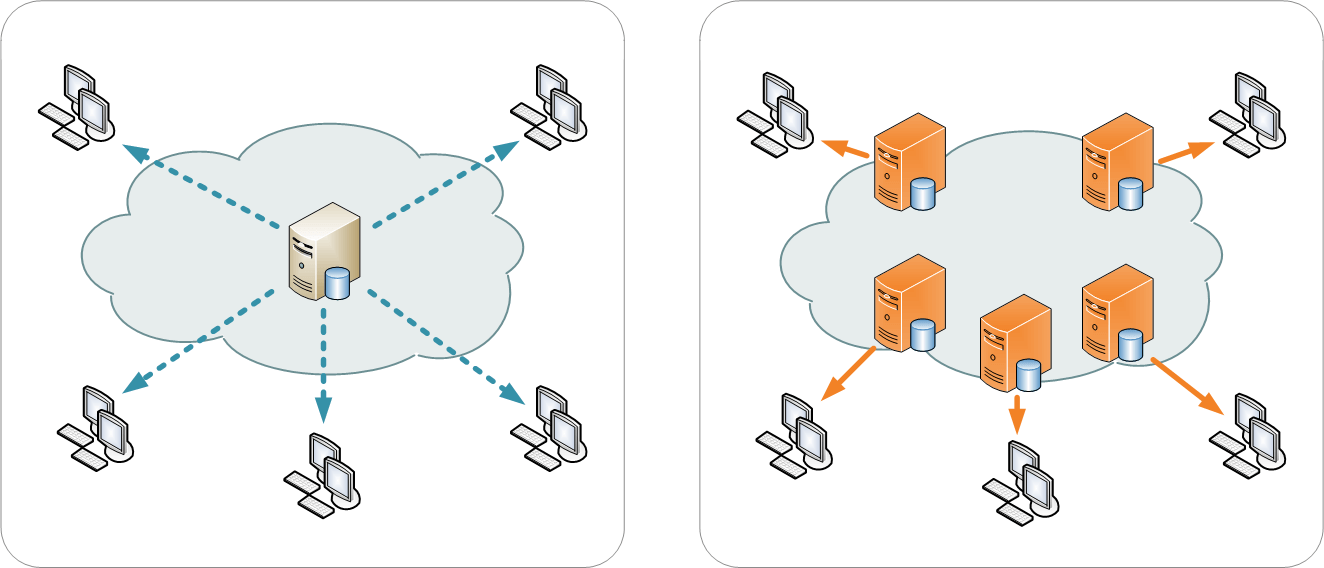The blog post discusses various Content Delivery Networks I have used for my websites since 2019. These include CDNs for Images, Video, Scripts, Documents, and Audio. I summarize insights and experiences with each CDN, highlighting their features and benefits. The article aims to help readers make informed decisions when selecting a CDN for their content delivery needs. Specifically, I will cover CDNs that are catered to small and medium businesses, as well as a few lesser-known CDNs that have proved to be reliable and cost-effective.
In our fast-paced digital age, a wide array of Content Delivery Networks (CDNs) offer unique features and advantages, such as enhancing website speed and security. In my personal experience, I’ve found the use of various CDNs across multiple platforms to be highly beneficial. This article provides an insight into the CDNs I have used in the past or at present. Each Content Delivery Network (CDN) offers its unique features and benefits.
हिंदी में सारांश
यह ब्लॉग पोस्ट विभिन्न सामग्री वितरण नेटवर्क (सीडीएन) की चर्चा करती है। इसमें बनीसीडीएन, ड्रॉपलर, बेरीकास्ट, स्टोरीचीफ, पुश्रसीडीएन, गमलेट, शॉर्टपिक्सेल, हिपोवीडियो, ब्रिक.डो, पॉडकास्ट.को, पब्लिशीटियो, लिस्टनर.एफएम और आलुघा को सीडीएन के रूप में विवरणित किया गया है। प्रत्येक सीडीएन के साथ अनुभवों की चर्चा, उनकी विशेषताओं और लाभों की हाइलाइट करते हैं। इस लेख का उद्देश्य पाठकों को उनकी सामग्री वितरण की आवश्यकताओं के लिए एक सीडीएन का चयन करते समय सूचित निर्णय लेने में मदद करना है।
मराठीत सारांश
ब्लॉग पोस्टमध्ये लेखकने विविध सामग्री वितरण नेटवर्क्सबद्दल आपल्याला माहिती दिली आहे. त्यात लेखकने बनीसीडीएन, ड्रॉपलर, बेरीकास्ट, स्टोरीचीफ, पुश्रसीडीएन, गमलेट, शॉर्टपिक्सेल, हिपोव्हिडिओ, ब्रिक.डो, पॉडकास्ट.को, पब्लिशिटिओ, लिस्टनर.एफएम आणि अलुघा यांच्या साथी सामग्री वितरण नेटवर्क्स म्हणून आपल्याला सूचित केलेले आहे. लेखक प्रत्येक सामग्री वितरण नेटवर्कसोबतच्या त्यांच्या अनुभवांची चर्चा करताना त्यांच्या वैशिष्ट्ये आणि फायदे आरोपीत केले आहे. लेखनाचा उद्देश आपल्याला आपल्या सामग्री वितरणाच्या आवश्यकतेसाठी सीडीएन निवडण्याच्या निर्णयात मदत करणे आहे.
In the digital age, where content is king, ensuring that your audience receives this content in the fastest and most efficient way possible is paramount. This is where Content Delivery Networks (CDNs) come into play, acting as the backbone of the internet, responsible for delivering a significant portion of all web traffic today.
As a solopreneur, blogger, or startup founder, leveraging CDNs can significantly impact your ability to reach and engage with your audience. My journey through various CDNs has been both enlightening and instrumental in shaping my online presence. Here’s a deep dive into my experiences with different CDNs across audio, images, and video content types.
Key Benefits of Using a CDN
- Faster content delivery and reduced latency by serving content from edge servers closer to users
- Handle spikes in traffic and ensure high availability during peak loads
- Improve website security against DDoS attacks by distributing traffic across servers
- Save on bandwidth cost and reduce load on origin servers
- Get valuable analytics into website traffic and engagement
Working of a CDN
A CDN works through a globally distributed network of edge servers and origin servers. Edge servers cache content and serve it to users based on location, while origin servers host the original content. It uses techniques like caching, dynamic acceleration, and edge logic computations to reduce latency and improve performance.
CDN Use Cases
- Websites, mobile apps
- Images, videos, media streaming
- Software downloads
- Ecommerce platforms
- Gaming content
- Social media sites[1][5]
List of Content Delivery Networks I have Used
Some Content Delivery Networks I have used since 2018 include BunnyCDN, Droplr, BerryCast, Storychief, PushrCDN, Gumlet, Shortpixel, Hippovideo, Brick.do, Podcast.co, Publitio, Listnr.fm, and Alugha . I have published several posts on this topic on this blog. Below are the CDNs I continue to use currently in varying degrees.

Content Delivery Networks I have used
CDN for Images
- BunnyCDN: A reliable and cost-effective CDN, BunnyCDN offers a powerful network for quick content delivery. It is known for its speed and affordability. Most inline images on this site are delivered via BunnyCDN. BunnyCDN Website
- Droplr: Droplr is known for its simple yet effective solutions like file sharing, screengrabs, and short URLs. This CDN is useful for delivering images and short videos. It provides a user-friendly interface and various features to enhance content sharing experience.All inline images in this post on this blog are hosted and server via Droplr CDN. Droplr Website
- Gumlet: Specializing in image (and now video) delivery, Gumlet optimizes images for different devices and resolutions, enhancing website speed and reducing bandwidth costs. It provides features like image resizing, lazy loading, and video transcoding to enhance performance and user experience. Gumlet Website. I have published reviews and first takes on Gumlet image and Video CDN on this bog as well on review sites like G2.
- CKE-CS CDN: use of the cke-cs.com domain indicates that CKEditor is using its own Content Delivery Network (CDN) infrastructure to deliver the image files. Images served on pages published on Brick.do (Not co be confused with https://cdn.ckeditor.com/ ), which is mentioned below.
- Storychief: Storychief is a blog publishing and social media posting tool, but it also has an in built CDN. I have used it in the past for image content delivery for blog posts on podcasting. It provides features like image optimization and resizing to ensure optimal delivery.
- PushrCDN: A CDN primarily used for delivering images, offering fast and reliable content delivery. It provides features like image optimization and caching to enhance performance.
- Shotepixel Adaptive Images: This is different from the image compression and optimization service of Shortpixel. A CDN primarily used for delivering images, offering efficient image compression and optimization. It provides various features like image resizing and lazy loading to enhance user experience. This service uses BunnyCDN at its back end.
Main CDN for Images as on Feb 2024 are mentioned below
Gumlet
Gumlet focuses on optimizing images (and videos), making it an invaluable tool for bloggers who use numerous high-resolution photos. Its automatic resizing and format conversion features ensure that images load quickly without sacrificing quality.
Publitio
Publitio supports not just audio but also video and images. Its strength lies in its versatility; however, when it comes to audio, it stands out by offering easy embedding options and robust file management tools that make handling podcast episodes a breeze.
Video Content Delivery Networks I have Used
- Berrycast: Berrycast is an app for creating, hosting, and sharing videos and screencasts. I have found berry cast to be very slow in my country (India) and the player often fails to load. Berrycast Website
- YouTube & Vimeo: Although not traditional CDNs, these platforms specialize in video hosting and streaming. YouTube | Vimeo
- Hippo Video: Hippo Video allows businesses to create, host, manage, share, and analyze videos. It provides features like video analytics and personalized video messaging to enhance engagement and user experience. Hippo Video Website
- Alugha: Alugha offers multilingual video hosting and streaming. It focuses on video content delivery, offering fast and efficient video streaming services. Alugha Website
Video CDN for my sites as on Feb 2024
Berrycast
Berrycast caters specifically to video content delivery. What sets Berrycast apart is its ease of use for creating and sharing screencasts or short informational videos – perfect for tutorials or product demos by startups aiming to educate their audience.
Alugha
Alugha takes video content delivery up a notch by focusing on multilingual videos. This CDN allows you to host videos with multiple audio tracks, making your content accessible to a global audience without having multiple versions of the same video.
CDN for Audio (Podcast Hosting)
I will publish a separate post on podcast hosting, but one service I use is podcast.co. All audio files on the site manoharketkar.top are hosted and served from podcast.co.This service is a good choice for delivering audio content, offering fast and reliable audio streaming services. It provides features like podcast hosting, distribution, and analytics to enhance user experience.
Listnr.fm: It provides features like podcast hosting, distribution, and analytics to enhance user experience. This service appears to be barely functional as on August 2023. Besides Rethink, this was one of the most disappointing Content Delivery Networks I have used.
Main CDN for Audio as on 2023
Spreaker
Spreaker specializes in audio distribution and offers an intuitive platform for podcasters. It’s ideal for creators looking to broadcast their podcasts across multiple platforms without worrying about bandwidth issues or server management. The analytics provided are insightful for understanding audience engagement.
CDN provided by Web Hosts
- Vercel: Vercel is a cloud platform for static sites and Serverless Functions. Vercel Website
- Netlify: Netlify’s platform is built on a CDN architecture for fast, reliable content delivery. Netlify Website
CDN for Documents
- Backblaze with Cloudflare: Backblaze B2 and Cloudflare’s CDN combine to offer an affordable, high-performing cloud storage and content delivery solution. Backblaze Website
Social Media Apps as Content Delivery Networks
Platforms like Twitter, Instagram, and Pinterest can serve as unconventional CDNs, hosting and delivering diverse content types.
Scripts for delivering CSS, Java Script, etc
- Cloudflare: Cloudflare is renowned for its superior performance and security features. Cloudflare Website
- jsdelivr: jsdelivr can be used for blogs or any theme customizations. jsDelivr Website
- Ckeditor: CKEditor provides an easy-to-use CDN for their rich text editor. You can simply add the following script to your HTML to use CKEditor from the official CKEditor CDN.
Some benefits of using a diverse range of CDN providers
- Increased performance: By distributing your content across a wider range of servers, you can reduce latency and improve performance for users around the world.
- Increased reliability: If one CDN provider goes down, your website or application will still be accessible through the other providers.
- Increased security: By using multiple CDN providers, you can reduce the risk of a single point of failure.
Major Types of CDNs available
- General Purpose CDNs: These CDNs offer a wide range of services, including caching, compression, and security features. They are suitable for most websites and applications. Examples of general purpose CDNs include Cloudflare, Akamai, and MaxCDN.
- Specialized CDNs: These CDNs focus on specific use cases, such as video streaming, live streaming, or gaming. They offer advanced features and optimizations tailored. Examples of specialized CDNs include Limelight, Level 3, and BitGravity.
- Hybrid CDNs: These CDNs combine elements of both general purpose and specialized CDNs, making them suitable for a wide range of use cases. Examples of hybrid CDNs include Amazon CloudFront and Google Cloud CDN.

How a CDN works
Some additional tips for selecting a CDN
- Consider your website’s traffic and bandwidth needs.
- Choose a CDN that has a global network of servers.
- Look for a CDN that offers a variety of features, such as caching, compression, and security.
- Compare CDN pricing plans to find the best value for your money.
Final Thoughts on Content Delivery Networks I have Used
The world of Content Delivery Networks (CDNs) can be complex and confusing, with so many options available in the market. However, by using a diverse range of CDN providers, you can ensure that your website or application is always up and running with optimal performance, even in the face of unexpected traffic spikes and other challenges.
Each CDN has its own strengths and weaknesses, so there is no one-size-fits-all solution. The key is to experiment with different providers and find the ones that work best for your unique needs. By doing so, you can improve user experience, reduce downtime, and ultimately drive greater success for your online business.
Each CDN comes with its unique set of features tailored towards specific types of content delivery needs. For audio-focused creators, Spreaker offers comprehensive podcasting tools whereas Publitio’s versatility makes it suitable for those juggling between different content types. My recommendations based on content delivery networks I have used ? Assess your specific needs—whether you’re prioritizing speed, ease of use, cost-efficiency or support for multiple languages—and choose a CDN that aligns with those requirements.
Content Delivery Networks Mentioned in this post
| BunnyCDN | Droplr |
| BerryCast | Storychief |
| PushrCDN | Gumlet |
| Shortpixel | Hippovideo |
| Brick.do | Podcast.co |
| Publitio | Listnr.fm |
| Alugha | Cloudflare |
This post on Content Delivery Networks I have used was updated and expanded on August 28, 2023 24 Feb 2024.



